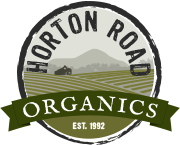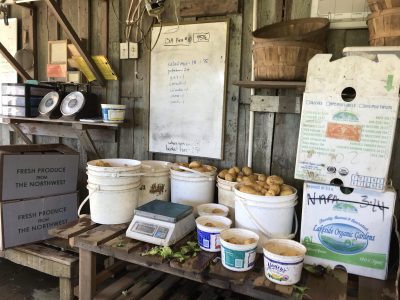One of the major motivators that took me from the studios and theaters of New York to a farm in Oregon is the urge to take part in something that was on the positive side of environmental impact.
This is what led me to do the plastic free July challenge. This is also what had me so engaged when i read this article on climate change and farming from February.
As Awareness Grows About Food’s Role In Climate Change, What Solutions Exist?
I appreciated the varied perspectives in the experts invited to take place in this roundtable.
They highlight farming as the source of around 30 percent of greenhouse gasses produced, and point out that despite this, there has been little focus from mainstream media and environmental organizations on agriculture as a sector to focus on when addressing climate change.
The main reasons agriculture produces greenhouse gasses are: deforestation, methane emission from cattle and rice fields, and nitrous oxide from overusing fertilizers.
I have been thinking a lot about deforestation since reading this article, and thoughts on deforestation and its environmental impact have come back up recently because of the fires in the Amazon that have been in the news recently. One of the experts in the roundtable lists deforestation in Brazil and Indonesia to be of the greatest concern for global carbon emissions, and the decisions of the current Brazilian president to be of the greatest concern. It seems in recent weeks that his worries were prescient.
The Civil Eats article mentions a program in India called Zero Budget Natural Farming, which encourages farmers to use compost instead of chemical fertilizers, saving them money, while giving the side benefit of helping the environment.
There is cause for hope, as we have collectively become more aware of the environmental impact of our food choices.
This is one of a whole series of roundtables on food that this website (which to be honest i had not been previously aware of) is doing for their 10th anniversary.
In July they talked about the rapid growth of the organic food industry, and August focuses on the labor aspect of the food industry, both in restaurants and on farms.
After 10 Years of Rapid Growth, What Does Organic Mean Today?
I appreciate these looks at the broader system within which i am working here on the farm. It’s sometimes easy to just put my head down, focus on the daily routine of planting, weeding and harvesting here on the farm. But going to the farmers markets or the grocery store, or reading the news, I am reminded again of the broader picture and broader focus of what i am doing here, and what it means for the future of the planet to be growing food in a small scale, organic, sustainable way.
Amanda is a New Yorker at heart who relocated to Oregon a year ago to try her hand at farming.





